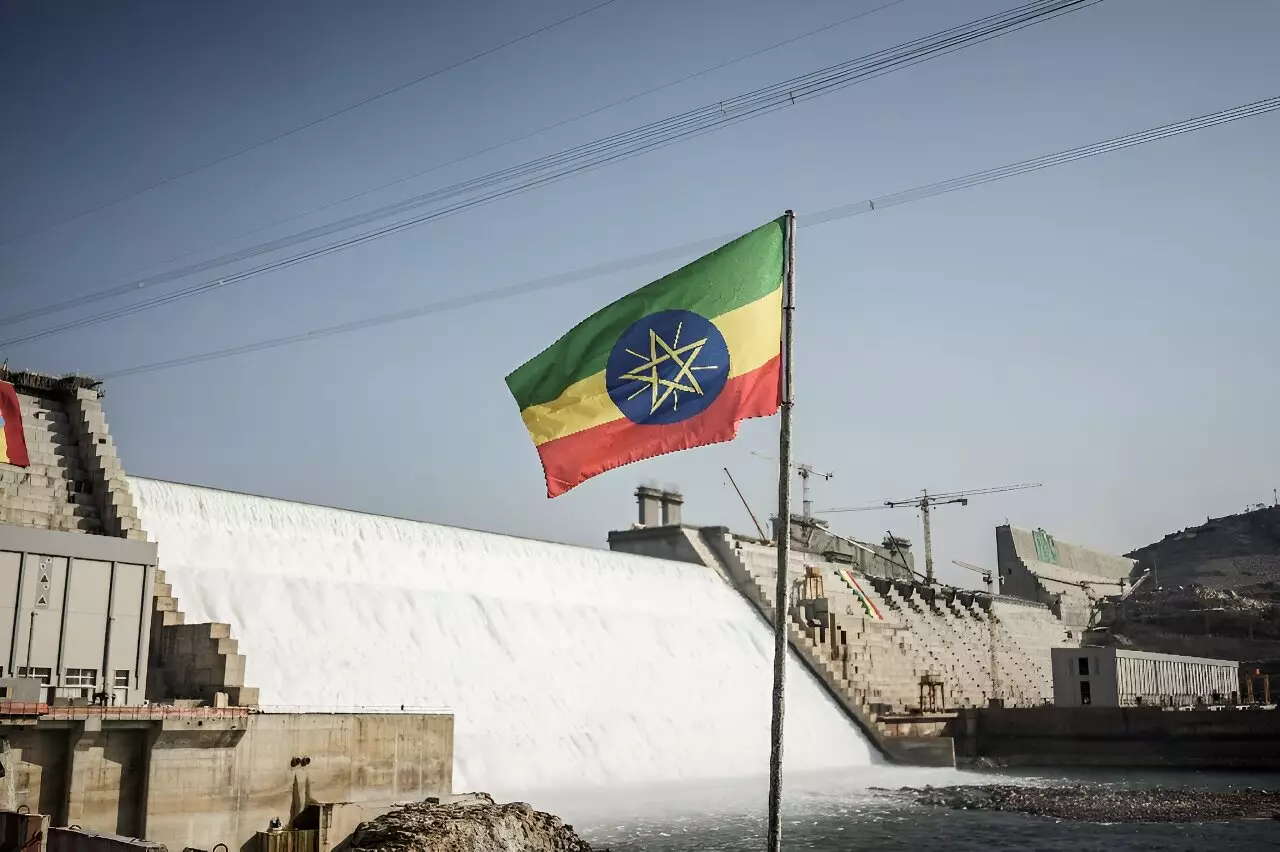Ethiopia recently announced that it has significantly increased its electricity production from the Grand Ethiopian Renaissance Dam (GERD) on the Blue Nile. With the addition of two more turbines, the dam is now generating 1,550 megawatts of electricity. This development has sparked tensions between Ethiopia and downstream nations Egypt and Sudan, who have long been at odds over the project. The construction of the dam, which was completed recently, has transitioned into the operational phase. Despite this progress, concerns about the impact of the dam on water flow downstream remain a point of contention.
The two newly operational turbines each generating 400MW have been added to the existing two turbines producing 375MW each, resulting in a total output of 1,550MW. Additionally, the dam’s spillways are releasing an extra 2,800 cubic meters of water downstream. The GERD project aims to become Africa’s largest hydroelectric dam, capable of generating over 5,000 megawatts of power when all 13 turbines are operational. Addis Ababa views the dam as crucial for improving electricity access and facilitating development in the country, where a significant portion of the population still lacks reliable electricity.
The construction of the GERD has not been without its challenges, particularly concerning neighboring countries, Egypt and Sudan. Egypt, heavily reliant on the Nile for water needs, fears that the dam’s operations could threaten its water access. Sudan, grappling with internal conflicts, has expressed fluctuating views on the dam. Despite Ethiopia’s assurances that the GERD will not diminish water flow downstream, the lack of a three-way agreement among the nations has hindered progress in resolving the dispute. Negotiations have faltered, leaving the issue unresolved.
Prime Minister Abiy Ahmed has highlighted the importance of the GERD in managing water flow, decreasing flood risks, and ensuring a steady water supply to downstream nations, particularly during droughts. Ethiopia’s plans to expand its electricity network and explore alternative clean energy sources, such as solar, wind, and geothermal power, have received support from the World Bank. However, the country continues to face electricity shortages, exacerbating poverty and limiting socio-economic opportunities for many. The GERD project stands as a critical component in Ethiopia’s quest for energy self-sufficiency and economic growth.
Ethiopia’s progress in increasing electricity production through the GERD marks a significant milestone in the country’s development efforts. However, the project’s controversial nature, coupled with ongoing disputes with downstream nations, underscores the complex challenges associated with large-scale infrastructure projects in shared water resources. Moving forward, transparent communication, diplomatic negotiations, and equitable agreements will be key to addressing the concerns of all parties involved and ensuring sustainable development in the region.


Leave a Reply